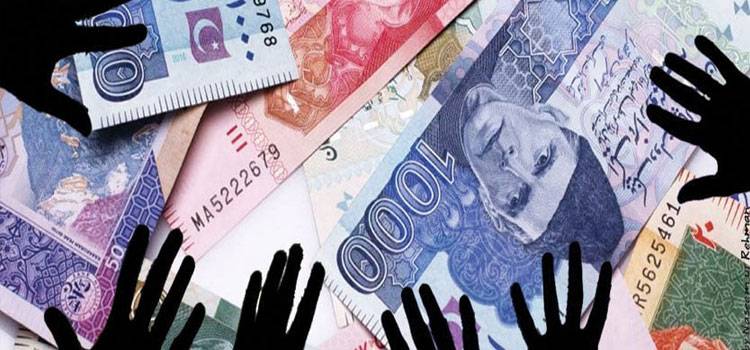
Corruption remains a primary reason for the persistent political malaise. It takes its toll on the nation’s economic health. It is a vicious malady that needs a proper diagnosis.
A profound insight from behavioural ethics research highlights that social norms contribute a great deal to normalising and encouraging corruption within governments. Therefore, reform efforts to deter corruption cannot be made in isolation without adding the social element.
Pakistan continues to rank 140th on Transparency International’s Corruption Perception Index (CPI) 2022. The state is also among top 10 countries whose CPI scores have significantly declined over the years. A closer look into the methodology of CPI gives a better understanding of the relevancy of prevalent social norms within a country surrounding corruption. The countries that rank worse on corruption perception index tend to have a society that readily accepts corruption.
In the case of Pakistan, the CPI draws upon data from eight different sources — reputable institutions — which capture corrupt behaviours such as bribery, diversion of public funds, use of public office for private gains, nepotism in civil service, and state capture in the public sector. These sources record corrupt behaviours in public offices by investigating questions, such as can officeholders who break the law and engage in corruption do so without fear of adverse publicity or are there traditions of bribe payments to secure contracts and favours. Such questions are indicative of the level of acceptance of corruption within society.
...corruption mostly tends to originate from social structures within a society where personal relationships often play a crucial role in determining the administrative and political culture — establishing a ‘clientelist’ form of informal system.
Similarly, Global Corruption Barometer (GCB) seeks to explore the way people of a particular country experience corruption by asking people directly through large surveys. Here again, the focus lies on the level of acceptability of corruption within a society. The GCB survey shows that in Pakistan 50 percent of people confessed to paying bribes to get access to basic services compared to 10 percent in South Africa. The reasons given for not reporting corruption were mainly two: corruption is presumed normal, and lack of faith in accountability.
What leads to normalisation of corrupt behaviours within a state? According to an ethnographic study conducted in Uzbekistan, corruption mostly tends to originate from social structures within a society where personal relationships often play a crucial role in determining the administrative and political culture — establishing a ‘clientelist’ form of informal system. In this informal system, corrupt behaviours are rather expected of a public office holder to benefit family and friends with favours, goods, and appointments. Not doing so can risk disrespect and derision. Eventually, these behaviours are internalised and likely to be displayed outside of one’s social sphere. For instance, a study led by the National Bureau of Economic Research found that when diplomatic immunity was given for parking violations in New York City, the diplomats from countries with high corruption had more unpaid tickets than diplomats from countries with low corruption.
Fruitful reforms will always demand collective actions, addressing communities as a whole rather than a single individual. Singapore in 1960s, Hong Kong in 1970s, and Georgia in 2000s suggest examples of such transitions, where ‘big pushes’ included comprehensive reforms that attacked corruption on both political and social fronts. For instance, in 1970s Hong Kong, when strong public opinion emerged against corruption, only then the government took decisive actions against corruption, and hence enacted the Independent Commission Against Corruption 1974 — which proved a resounding success.
Likewise, when Georgia decided to crack down on corruption, the entire effort was declared a ‘mental revolution’ in the public relations campaigns. These campaigns portrayed the civil servants as ‘good people’ and remodelled public buildings full of windows and more open to indicate transparency. Seeing things differently influences people in approaching things differently.
On a smaller scale, newspapers and social media can also aid in stigmatising corrupt behaviours within society. Take for instance, Uganda. The corruption was so rampant there that the schools would only get 24 percent of the federal grants until newspapers started publishing the actual amounts they were entitled to under Uganda’s education policy from 1991-2002. Eventually, the funding increased to 80 percent of the dedicated amount. In this manner, mass media aided in defaming corrupt behaviours and diverting public opinion toward the issue.
The persistent nature of long-held social norms may make it difficult to bring reforms, but continuous public engagement on smaller levels can help in changing mindsets. For instance, in Colombia’s capital, Bogotá, the mayor employed actors and pantomimes to mock people who violated traffic rules. Even though, in the beginning, there were high apprehensions, but eventually it proved effective as it helped increase the number of pedestrians obeying traffic rules from 26 percent to 75 percent within months.
Correspondingly, anti-corruption strategies in Pakistan will not only require enacting stringent laws, empowering institutions, and repressing individual deviant behaviours but an overall emphasis on social norms of clean government through campaigns and public engagement. Society has to rise. However, this rise is mainly dependent on a good education, which will rekindle the defamatory connotations associated with the word corruption within society and thus kick-start a total transformation in all tiers of the state.

